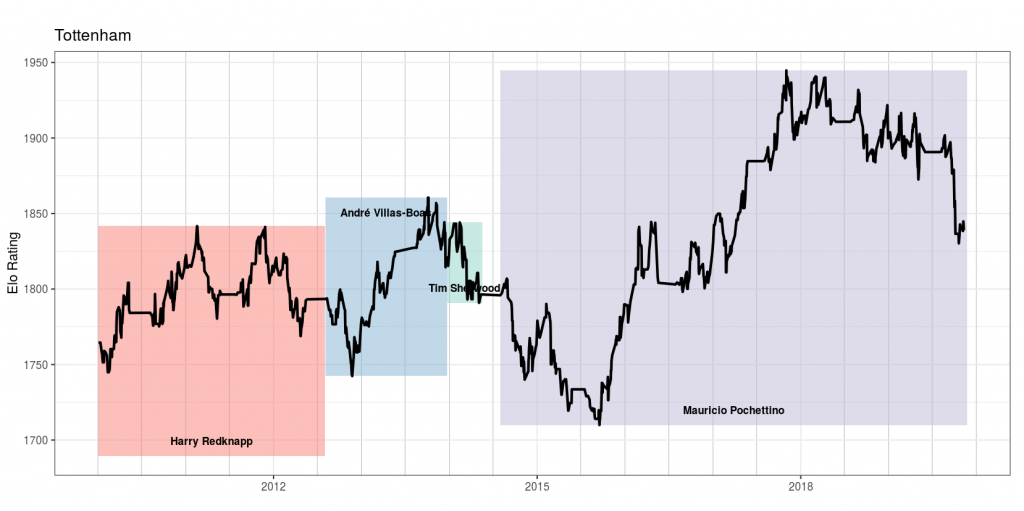After 20 games played, Liverpool are sitting pretty on top of the Premier League with 58 points (out of a possible 60). The only jitter in the campaign so far came in a draw away at Manchester United.
I made what I think is a cool graph to put this performance in perspective. I looked at Liverpool’s points tally at the end of the first 19 match days through the length of the Premier League, and looked at “progress” (the data for last night’s win against Sheffield isn’t yet up on my dataset, which also doesn’t include data for the 1992-93 season, so those are left out).
Given the strength of this season’s performance, I don’t think there’s that much information in the graph, but here it goes in any case:
I’ve coloured all the seasons where Liverpool were the title contenders. A few things stand out:
- This season, while great, isn’t that much better than the last one. Last season, Liverpool had three draws in the first half of the league (Man City at home, Chelsea away and Arsenal away). It was the first month of the second half where the campaign faltered (starting with the loss to Man City).
- This possibly went under the radar, but Liverpool had a fantastic start to the 2016-17 season as well, with 43 points at the halfway stage. To put that in perspective, this was one more than the points total at that stage in the title-chasing 2008-9 season.
- Liverpool went close in 2013-14, but in terms of points, the halfway performance wasn’t anything to write home about. That was also back in the time when teams didn’t dominate like nowadays, and eighty odd points was enough to win the league.
This is what Liverpool’s full season looked like (note that I’ve used a different kind of graph here. Not sure which one is better).
Finally, what’s the relationship between points at the end of the first half of the season (19 games) and the full season? Let’s run a regression across all teams, across all 38 game EPL seasons.
The regression doesn’t turn out to be THAT significant, with an R Squared of 41%. In other words, a team’s points tally at the halfway point in the season explains less than 50% of the variation in the points tally that the team will get in the second half of the season.
Coefficients:
Estimate Std. Error t value Pr(>|t|)
(Intercept) 9.42967 0.97671 9.655 <2e-16 ***
Midway 0.64126 0.03549 18.070 <2e-16 ***
---
Signif. codes: 0 ‘***’ 0.001 ‘**’ 0.01 ‘*’ 0.05 ‘.’ 0.1 ‘ ’ 1
Residual standard error: 6.992 on 478 degrees of freedom
(20 observations deleted due to missingness)
Multiple R-squared: 0.4059, Adjusted R-squared: 0.4046
F-statistic: 326.5 on 1 and 478 DF, p-value: < 2.2e-16
The interesting thing is that the coefficient of the midway score is less than 1, which implies that teams’ performances at the end of the season (literally) regress to the mean.
55 points at the end of the first 19 games is projected to translate to 100 at the end of the season. In fact, based on this regression model run on the first 19 games of the season, Liverpool should win the title by a canter.
PS: Look at the bottom of this projections table. It seems like for the first time in a very long time, the “magical” 40 points might be necessary to stave off relegation. Then again, it’s regression (pun intended).





 We see that if Liverpool replicate their results from last season for the rest of the fixtures, they should win the league comfortably.
We see that if Liverpool replicate their results from last season for the rest of the fixtures, they should win the league comfortably.

